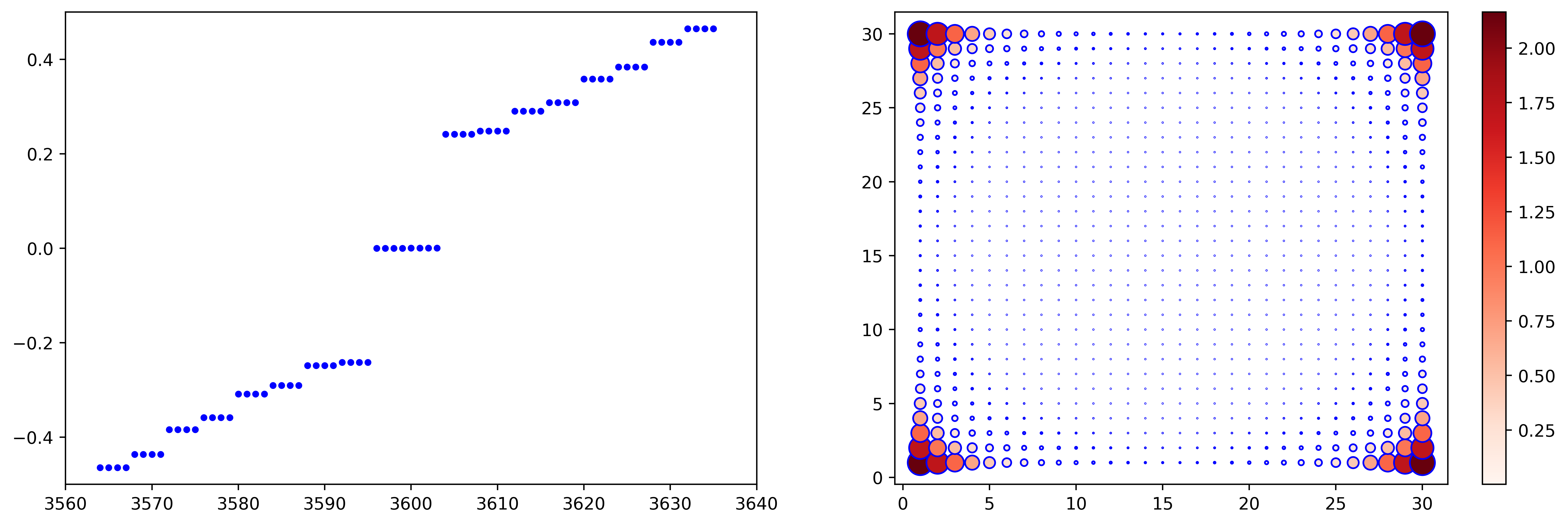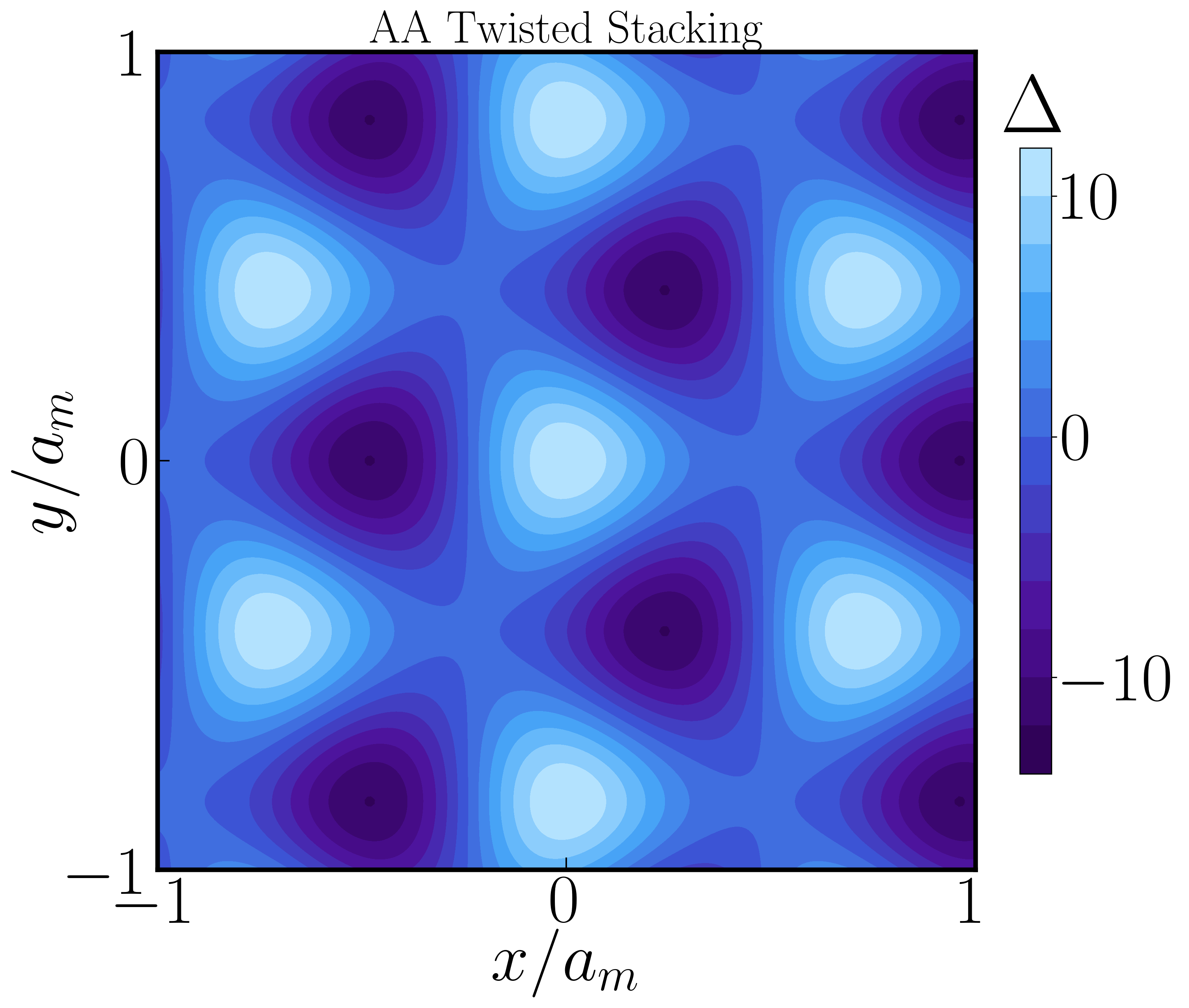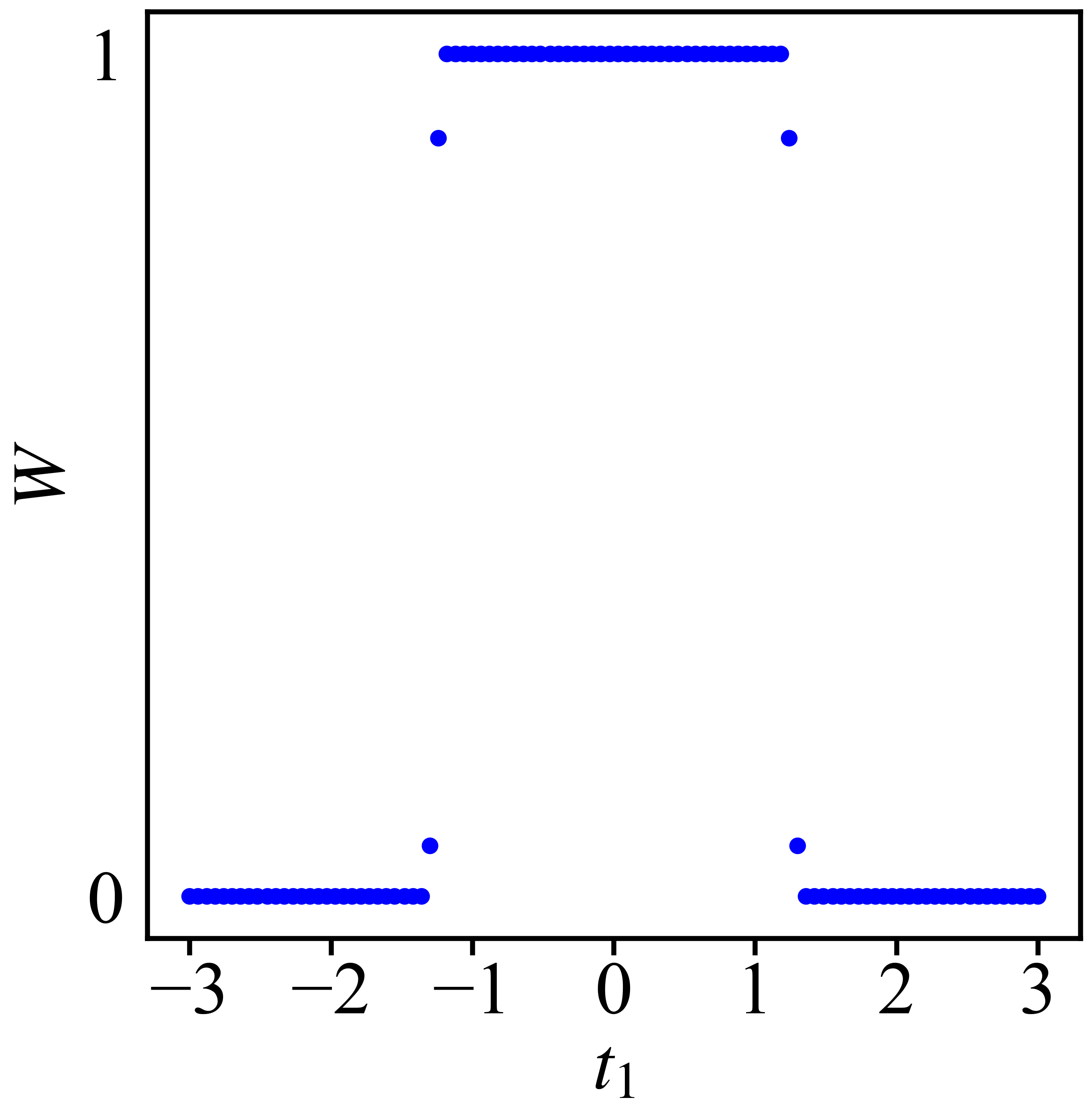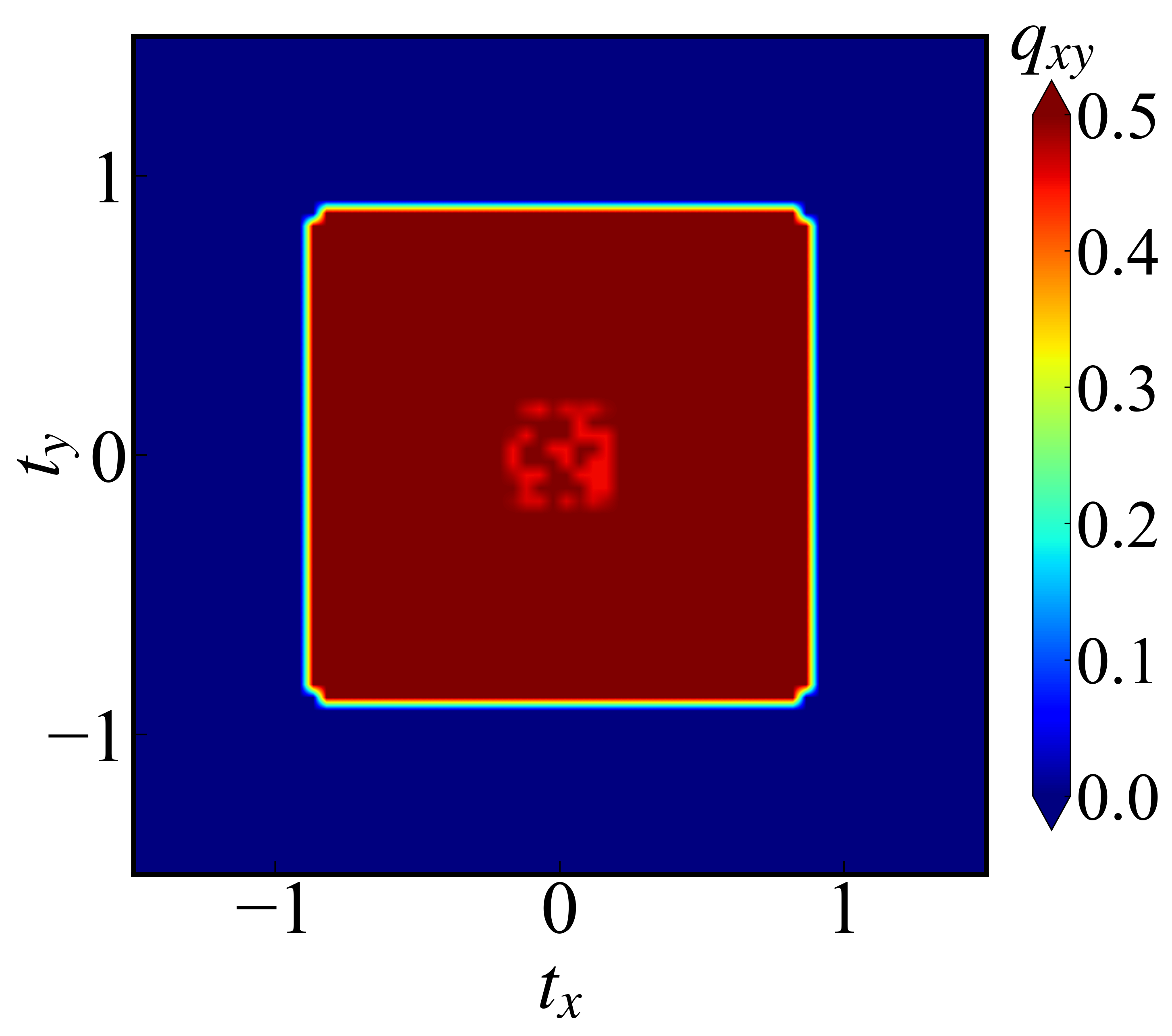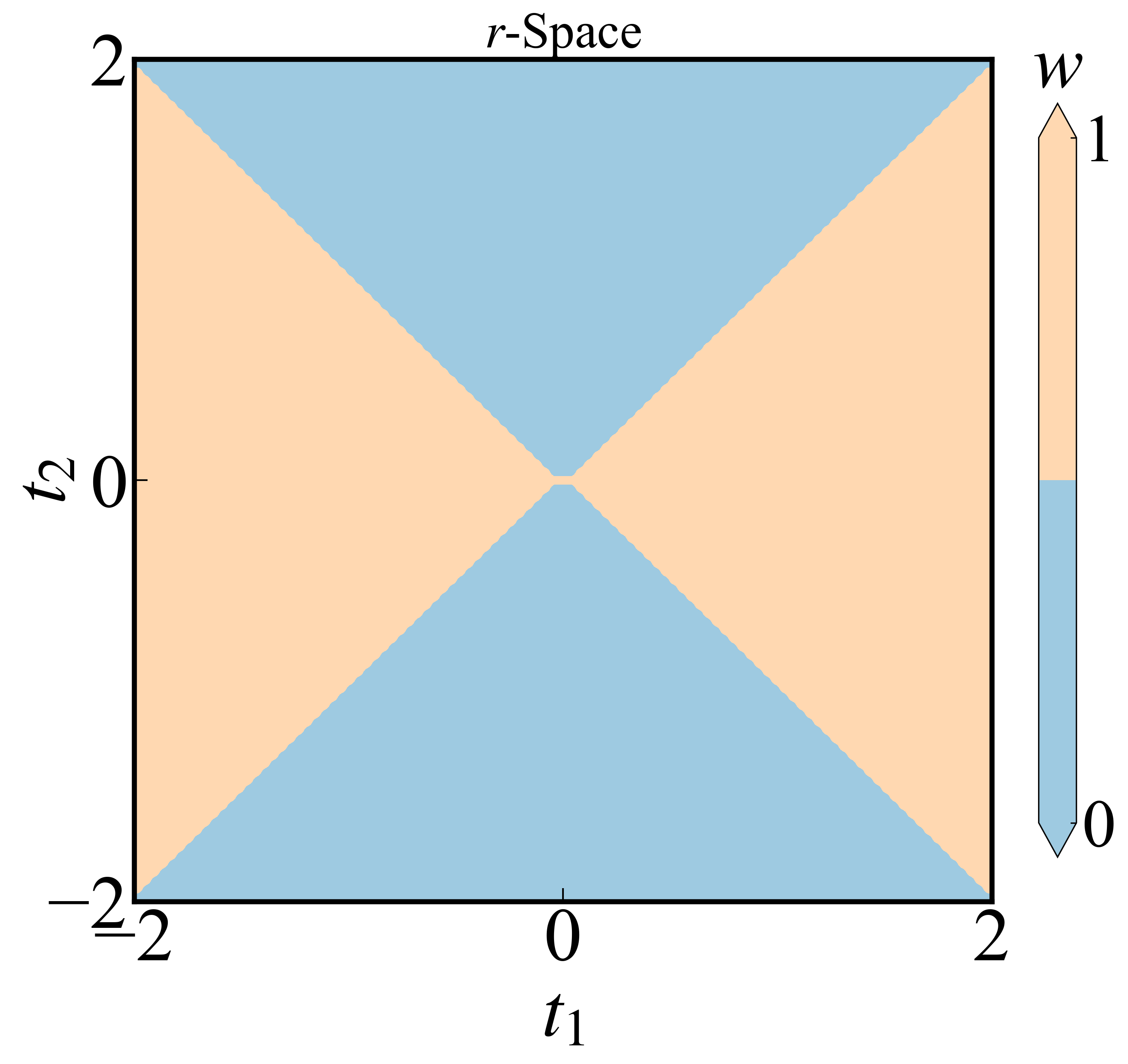分数约瑟夫森效应(Fraction Josephson Effect)
前言
这里是想实现一个有Kitaev模型构成的Josephson结,在结的两侧分别具有Majorana费米子,在中间加入一个绝缘体,从而系统中会存在零能Andreev束缚态,Josephson电流也会出现$4\pi$的周期。具体的物理内涵在这里先不解释了,我自己暂时对其中的内容理解不是很透彻,等之后完全理解了再重新整理一份笔记详细讨论关于拓扑超导体中的Josephson效应。
直接上代码计算Josephson效应1
2
3
4
5
6
7
8
9
10
11
12
13
14
15
16
17
18
19
20
21
22
23
24
25
26
27
28
29
30
31
32
33
34
35
36
37
38
39
40
41
42
43
44
45
46
47
48
49
50
51
52
53
54
55
56
57
58
59
60
61
62
63
64
65
66
67
68
69
70
71
72
73
74
75
76
77
78
79
80
81
82
83
84
85
86
87
88
89
90
91
92
93
94
95
96
97
98
99
100
101
102
103
104
105
106
107
108
109
110
111
112
113
114
115
116
117
118
119
120
121
122
123
124
125
126
127
128
129
130
131
132
133
134
135
136
137
138
139
140
141
142
143
144
145
146
147
148
149
150
151
152
153
154
155
156
157
158
159
160
161
162
163
164
165
166
167# 构造Josephson junction
using SharedArrays, LinearAlgebra,Distributed,DelimitedFiles,Printf,Arpack
# --------------------------------------
function pauli()
s0 = zeros(ComplexF64,2,2)
s1 = zeros(ComplexF64,2,2)
s2 = zeros(ComplexF64,2,2)
s3 = zeros(ComplexF64,2,2)
#----
s0[1,1] = 1
s0[2,2] = 1
#----
s1[1,2] = 1
s1[2,1] = 1
#----
s2[1,2] = -im
s2[2,1] = im
#-----
s3[1,1] = 1
s3[2,2] = -1
#-----
return s0,s1,s2,s3
end
#---------------------------------------------------------------
function boundary(xn::Int64)
bry = zeros(Int64,2,xn)
for i0 in 1:xn
bry[1,i0] = i0 + 1
if i0 == xn
bry[1,i0] = bry[1,i0] - xn
end
bry[2,i0] = i0 - 1
if i0 == 1
bry[2,i0] = bry[2,i0] + xn
end
end
return bry
end
#-------------------------------------------------------------------
function junction(ix::Int64,phil::Float64,phir::Float64,lpos::Int64,rpos::Int64)
# 两侧超导位相存在差
if ix <= lpos
return exp(im*phil)
elseif ix >= rpos
return exp(im*phir)
else
return 0 # 正常态区域不存在电子配对,设置为零
end
end
#-----------------------------------------------------------------------------------------
function orpar1(ix::Int64,phil::Float64,phir::Float64,lpos::Int64,rpos::Int64)::Matrix{ComplexF64}
# dx^2-y^2 pairing
phi = junction(ix,phil,phir,lpos,rpos)
g1 = zeros(ComplexF64,4,4)
g1[1,2] = -im*phi
g1[2,1] = conj(g1[1,2])
return g1
end
#-----------------------------------------------------------------------------------------
function matset(phil::Float64,phir::Float64,lpos::Int64,rpos::Int64)
t0::Float64 = 1.0
mu::Float64 = 1.0
d0::Float64 = 1.0
hn::Int64 = 2
xn::Int64 = 100 # 开边界格点数量
N::Int64 = xn*hn
ham = zeros(ComplexF64,N,N)
s0,sx,sy,sz = pauli()
bry = boundary(xn)
#------------------------
for i0 in 1:xn
g1 = orpar1(i0,phil,phir,lpos,rpos) # 需要对序参量进行修正
for i1 in 0:hn - 1,i2 in 0:hn - 1
ham[i0 + i1*xn,i0 + i2*xn] = -mu*sz[i1 + 1,i2 + 1]
if i0 != xn
ham[i0 + i1*xn,bry[1,i0] + i2*xn] = -t0*sz[i1 + 1,i2 + 1] + d0/(2*im)*g1[i1 + 1,i2 + 1]
end
if i0 != 1
ham[i0 + i1*xn,bry[2,i0] + i2*xn] = -t0*sz[i1 + 1,i2 + 1] - d0/(2*im)*g1[i1 + 1,i2 + 1]
end
end
end
#-----------------------------------
# 修正边界hopping
for ix in 1:xn
i0 = ix
for i1 in 0:hn -1,i2 in 0:hn - 1
if ix == lpos
ham[i0 + xn * i1,bry[1,i0] + xn * i2] = -t0*sz[i1 + 1,i2 + 1]
elseif ix == rpos
ham[i0 + xn * i1,bry[2,i0] + xn * i2] = -t0*sz[i1 + 1,i2 + 1]
end
end
end
#-----------------
if ~ishermitian(ham)
f1 = open("hermi.dat","w")
for m1 in 1:N,m2 in 1:N
if ham[m1,m2] != conj(ham[m2,m1])
# println("(",m1,",",m2,")",ham[m1,m2],ham[m2,m1])
writedlm(f1,[real(m1) real(m2) ham[m1,m2] ham[m2, m1]],"\t")
end
end
close(f1)
end
#-----------------------------------------
if ishermitian(ham)
temp2 = (a->( "%3.1f" a)).(phir/pi)
fx1 = "eigval-phase-" * temp2 * ".dat"
#f1 = open(fx1,"w")
val,vec = eigen(ham)
# val,vec = eigs(ham,nev = 50,maxiter = 30,which = :SM)
ind = (a->( "%5.2f" a)).(range(1,length(val),length = length(val)))
val2 = (a->( "%15.8f" a)).(sort(map(real,val)))
#writedlm(f1,[ind val2],"\t")
#close(f1)
else
println("Hamiltonian is not hermitian")
# break
end
return sort(map(real,val))
end
#--------------------------------------------------------------------------------
function phase()
philist = 0:0.1:4
vallist = SharedArray(zeros(Float64,length(philist),200))
for i0 in 1:length(philist)
vallist[i0,:] = matset(0.0,philist[i0]*pi,50,51)
end
fx1 = "KitaevChain-short.dat"
f1 = open(fx1,"w")
x0 = (a->( "%15.8f" a)).(philist)
y0 = (a->( "%15.8f" a)).(vallist)
writedlm(f1,[x0 y0],"\t")
end
#-----------------------------------------------------------------------------------
function current()
kbT::Float64 = 0.001
dphi::Float64 = 0.1
philist = 0:dphi:4
vallist = SharedArray(zeros(Float64,length(philist),200))
for i0 in 1:length(philist)
vallist[i0,:] = matset(0.0,philist[i0]*pi,50,51)
end
len1 = length(vallist[1,:]) # 只需要能量为正的本征值
I0 = []
phi = []
for i0 in 1:length(philist) - 1 # loop for phase
re1 = 0
for i1 in Int(len1/2) + 1:len1 # loop for eigvals
re1 += tanh(1/kbT*vallist[i0,i1]/2)*(vallist[i0 + 1,i1] - vallist[i0,i1])/(dphi*pi)
end
append!(I0,re1)
append!(phi,philist[i0])
end
fx1 = "KitaevChain-current.dat"
f1 = open(fx1,"w")
x0 = (a->( "%15.8f" a)).(phi)
y0 = (a->( "%15.8f" a)).(I0)
writedlm(f1,[x0 y0],"\t")
# writedlm(f1,[y0],"\t")
close(f1)
end
#------------------------------------------------------------------------------------
phase()
current()
结果
这里分别计算了体系的能谱$E(\phi)$随着两侧超导位相差的变化以及Josephson电流$J_s(\phi)$。
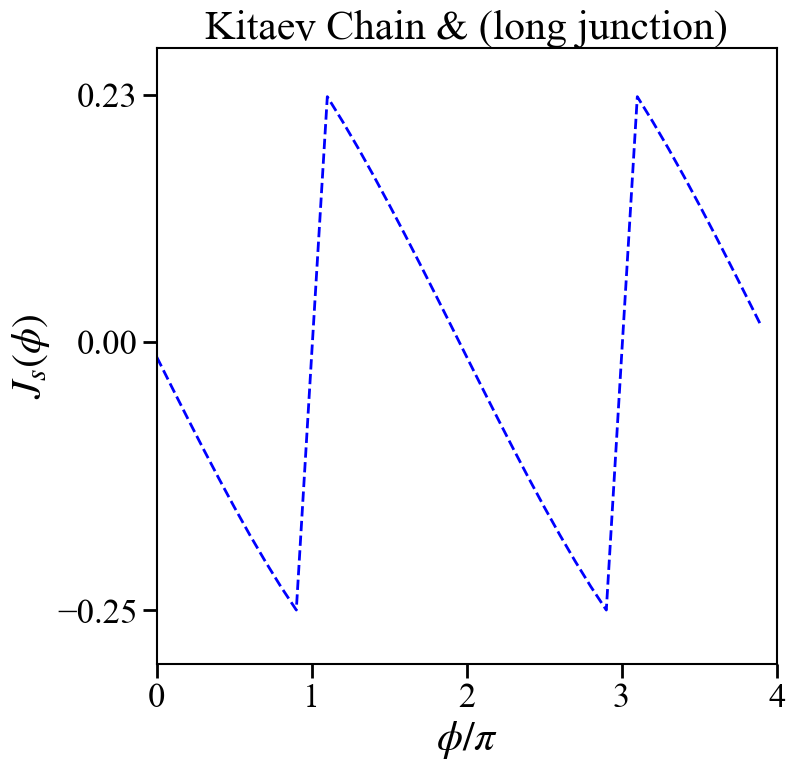
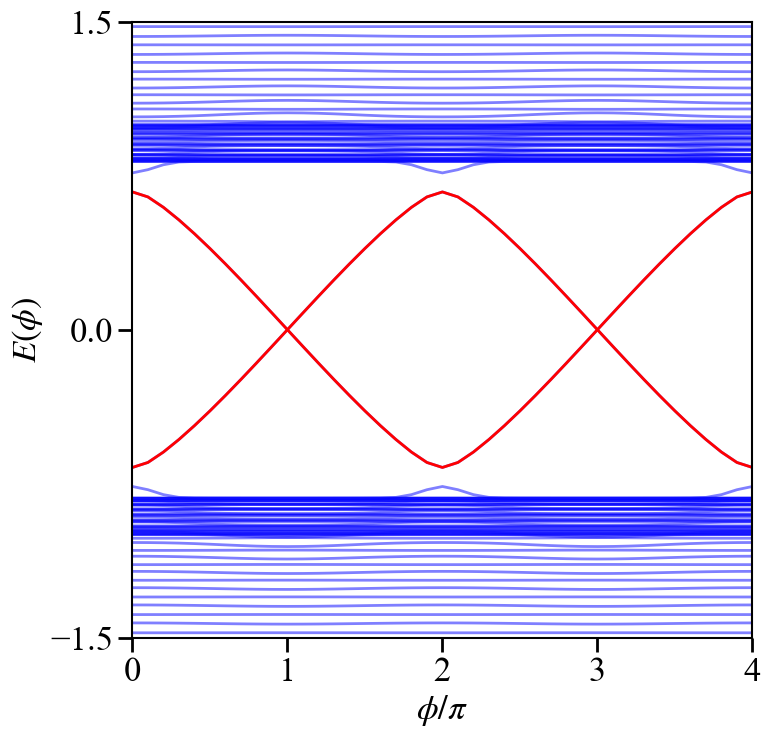
绘图程序
习惯了用python进行绘图,这里顺便就把绘图程序也放在这里,方便自己平时查一些设置。
plot-$E(\phi)$
1 | import numpy as np |
plot-current
1 | import numpy as np |
鉴于该网站分享的大都是学习笔记,作者水平有限,若发现有问题可以发邮件给我
- yxliphy@gmail.com
也非常欢迎喜欢分享的小伙伴投稿



